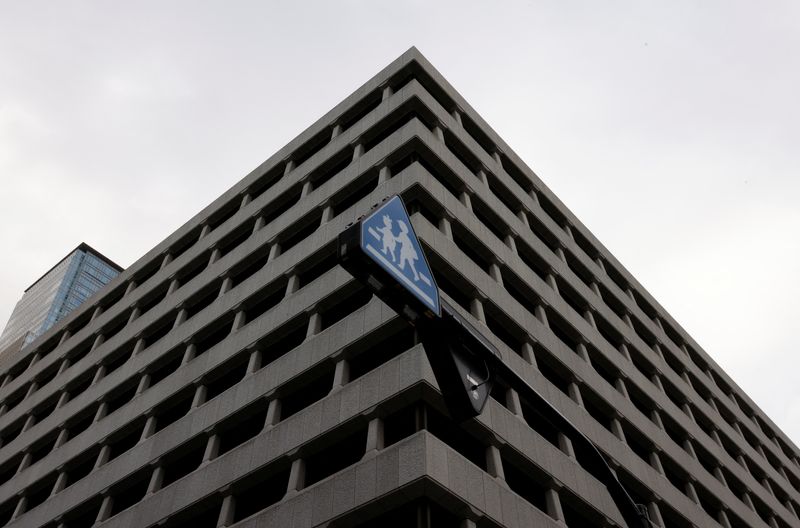By Rae Wee and Brigid Riley
SINGAPORE/TOKYO (Reuters) - One of the last anchors for global bond markets was being hauled in on Tuesday, as the Bank of Japan announced a new degree of tolerance for rising government bond yields and signalled an end to its seven-year straightjacket on long-term rates.
A 1% cap on the 10-year Japanese government yield became a "reference" and the central bank watered down language about the effort and cash it would expend to keep the rate under control.
Yields along the Japan curve rose to decade highs - the 10-year breached 0.95% - as investors eyed higher rates in a debt market worth more than a quadrillion yen ($7 trillion). Bund and Treasury yields were broadly steady.
"The Bank of Japan today de-facto abolished YCC," said Marcel Thieliant, head of Asia-Pacific at Capital Economics, referring to the central bank's yield curve control policy.
The BOJ's vow to buy the 10-year bond at a yield of 1% every day is now gone, replaced with a vaguer promise to buy taking account "market rates and other factors," which was taken by markets as a green light for ultra-low yields to rise.
The move followed relaxations to the yield control policy in December and July and had been expected in some quarters -- leading to a fall for the yen and a gain for Japanese stocks in relief that the BOJ hadn't announced anything more radical.
The yen was last down about 0.9% to 150.4 per dollar, while the Nikkei closed 0.5% higher, with insurance and bank stocks leading gains.
Still, the signal can be expected to reverberate around the world: One of the last central bank hold outs is slowly but surely leaving the era of ultra-easy policy behind.
Japanese authorities will no longer be leaning so forcefully against the rising tide of global interest rates.
In time, it also means higher borrowing costs for the Japanese government, companies and consumers, and perhaps fewer foreign investment outflows from Japan - the world's biggest creditor - if rates at home turn attractive.
"Global investors will pay heed to the Bank of Japan's policy decision today, which signals a further step towards global monetary policy normalisation," said Frederic Neumann, chief Asia economist at HSBC in Hong Kong.
LAGGARD YEN
Quickening inflation at home, rising interest rates abroad and a falling yen currency had pressured policymakers to shift and is feeding expectations that a rise in short-term rates will follow.
Two-year Japanese government bond (JGB) yields, which track short-term expectations, made their sharpest jump since March 2020 on Tuesday to a 12-year high of 0.14%.
Inflation ran above the BOJ's 2% target for an 18th straight month in September, and the board revised up its forecasts to project it above 2% this year and next.
The gap between 10-year Japanese yields and their U.S. equivalent also hit over 400 basis points in October - its widest for more than 22 years, which has driven the yen close to three-decade lows.
The BOJ spent some 9 trillion yen ($59.84 billion) defending its yield cap in October alone, according to Capital Economics' Thieliant.
"The BOJ apparently feared that sticking to 1% would force the Bank to purchase a large amount of government bonds and further weaken the yen," said Hirofumi Suzuki, chief FX strategist at Sumitomo Mitsui Banking Corporation.
"As a result, the YCC framework seems to have become more of a dead letter."
To be sure, the BOJ has foreshadowed a gradual rather than a sudden exit -- in contrast to the Reserve Bank of Australia which abruptly ceased defending its yield target in 2021, later announcing the end of the policy after wild trade in the market.
In part, analysts said that explained why the yen fell on Tuesday to languish around 150, with a rally no longer expected until U.S. rates start falling or Japanese rates go up quickly enough to reverse so-called "carry" trades, where investors take advantage of differences in borrowing costs between countries.
BOJ Governor Kazuo Ueda said he has no pre-set ideas on the sequence of an end to yield curve control or negative rates, and that he doesn't expect the 10-year yield to sharply exceed 1% on a sustained basis. It didn't on Tuesday.
But Ueda added that the bank will "accommodate a rise in long-term interest rates that reflect fundamentals."
It is likely the market will soon test what that means, to see when and how tenaciously the BOJ will respond with bond purchases if it thinks yields are rising too quickly.
"This is working, in a way, to increase the volatility of the global rates market," said Naka Matsuzawa, chief macro strategist at Nomura in Tokyo.

"It depends now how ... they operate on purchase operations."
($1 = 150.3900 yen)